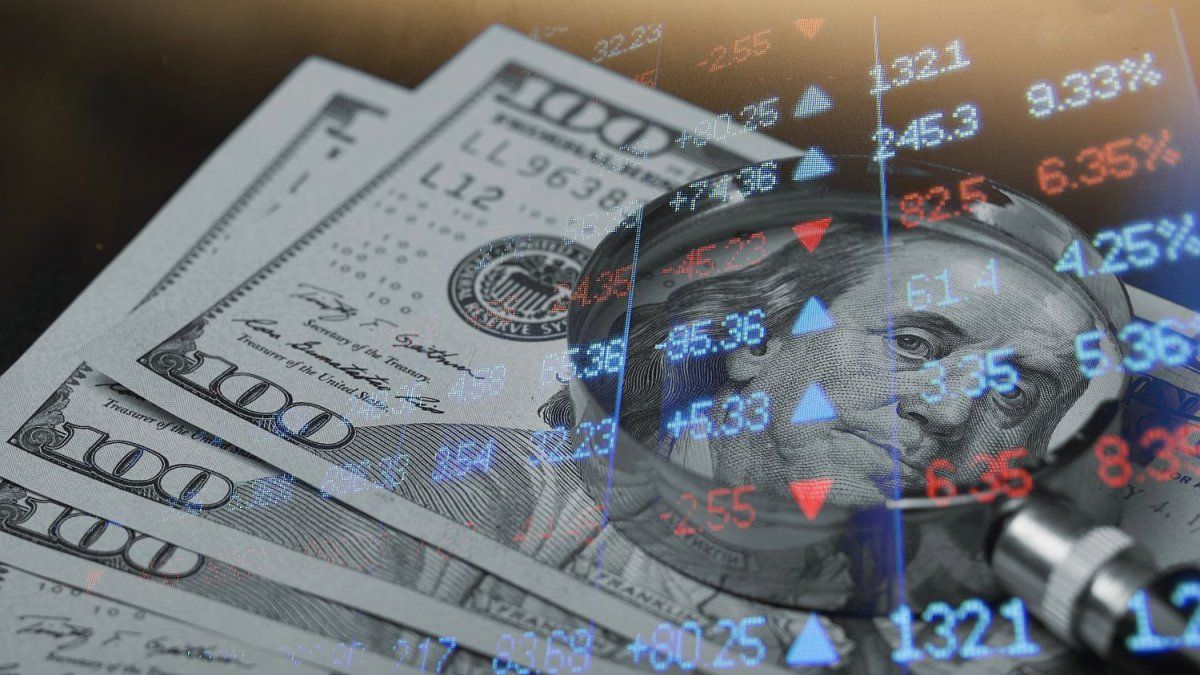The net tickets of June promoted the strength of the first part of 2025, highlighting North America and Europe.
Last June data that show an important flow to the Global Golden Funds for US $ 38,000 million, they left a balance of the first semester of the 2025 positive 2025marking the greatest entry in that period from the first half of 2020. The surveys of Bloomberg, Company Filings, Ice Benchmark Administration and WGC realize that in the first part of the year the total assets also under the management of the Global Golden ETFs increased to a maximum of the end of the month and the holdings bounced at the highest level in 34 months. In addition, as a result of the boom in the world gold market, The liquidity level reached US $ 329,000 million daily in the first semester, the highest level since 2018. At the regional level, all areas registered tickets last month, with US and European investors at the head.
The content you want to access is exclusive to subscribers.
But the balance of the first semester shows that North America concentrated most of the tickets, registering the first most solid semester in five years. And despite the deceleration in May and June, Asian investors acquired a record amount of ETF of gold during the first semester, contributing with an impressive 28% to the global net flows, with only 9% of the total assets under the management of the world. European Flows finally became positive in the first half of 2025, after uninterrupted semiannual losses since the second semester of 2022.


At the end of the first semester, the rise in the price of gold and notable tickets promoted the total assets under management of Gold Global ETFs by 41% more, up to US $ 383,000 million, a record for a month. In terms of the total collective holdings of physical gold, 397 tons grew up to 3,616 tons, the highest value for a month since August 2022.
Gold: How was the regional panorama formed?
- North America attracted US $ 4,800 million in June, the largest monthly entry since March, which raised the total entries of the first AU S21,000 million semester. As explained by the world metal market experts, the increase in geopolitical risks in the midst of the conflict between Israel and Iran promoted the demand for assets in investors and supported tickets in North American Gold ETFs. It is worth noting that, although the Fed maintained stable interest rates in June, it continued to express its concern about the slowdown in growth and increased inflation. According to market expectations, investors foresee three rate cuts by the end of 2025 and two additional in 2026. Faced with this panorama, the investor response has been rapid: The yields of the American treasure bonds decreased and the dollar continued to weaken. Gold market analysts consider that it is likely that political uncertainty and persistent fiscal concerns continue to weigh on the market, which in turn could boost the demand of ETF of gold in the short and medium term.
- Capital tickets in Europe continued for the second consecutive month, adding US $ 2,000 million in June (the largest amount since January) and raising the total first semester of the AU $ S6,000 million region. The United Kingdom led capital tickets during the month; Although the Bank of England kept interest rates without changes in its June meeting, the position was, in general, moderate. Anyway, in combination with weaker growth, moderation of inflation and cooling of the labor market, Investors increased their bets on future feat cuts. This caused a fall in local yields and promoted the attractiveness of gold. For now, the eighth cut of the European Central Bank (ECB), uncertainty about growth and increased geopolitical risks in general contributed to the demand of ETF of gold in several important markets.
- Asian flows recovered in June, although only slightly, with US $ 610 million, closing at US $ 11,000 million, a record amount for any period of the first semester. India led the entries of last month, probably driven by the increase in geopolitical risks in the Middle East. Japan registered tickets for ninth consecutive month (US $ S198 million YU $ S1,000 million in the first semester), possibly driven by the high concern for inflationparticularly when the price of rice shot. For its part China only recorded minor tickets in the month (US $ 137 million) as commercial tensions softened and the local price of gold was moderated. However, analysts point out that China’s tickets in the first half, of US $ 8 billion (85 tons), had no precedents in the middle of the increase in commercial risks with the US, concern for the growth and rise of the price of gold.
- The funds quoted in other regions attracted US $ 148 million in June, which raised the entries of the first semester AU $ S661 million. Australia and South Africa were the main taxpayersboth during the month and in the first semester. It should be noted that the assets under management and the Holds of Australian gold ETFs reached their respective ends of the month in June.
World market behavior
With respect to the world market as a whole, Negotiation volumes averaged US $ 329,000 million daily during the first semester, the highest semiannual value. However, in June there was a decrease in volumes (-20% monthly) probably affected by a short-term rebound in the stock market and a lower impulse of gold. While on the side of extraburstile operations (OTC) there was an increase in the first semester up to US $ 16,000 million daily, well above its average of 2024, of US $ 128,000 million per day. The volumes negotiated in the stock market also experienced a considerable increase during the first semester, with An average of US $ 159,000 million daily, driven by greater activity in Comex and the Shanghai futures bag. Meanwhile, the volumes negotiated in Global ETFs continued to strengthen themselves in the first semester, especially in North America and Asia, which averaged US $ 4,300 million per day YU $ S900 million daily, respectively.
As for the futures market, the total total net positions in Gold Futures Comex fell 23% to 586 tons in the first semester, but significantly bouncing a 6.5% monthly in June. The data show that Fund managers reduced their long positions by 28% during the first six monthsbut it should be noted that, during June, the positions increased by 11% monthly to 406 tons, which was probably due to the consolidation of the price of gold, which gave investors an opportunity to begin to recompose their positions.
Source: Ambito
I am a 24-year-old writer and journalist who has been working in the news industry for the past two years. I write primarily about market news, so if you’re looking for insights into what’s going on in the stock market or economic indicators, you’ve come to the right place. I also dabble in writing articles on lifestyle trends and pop culture news.




